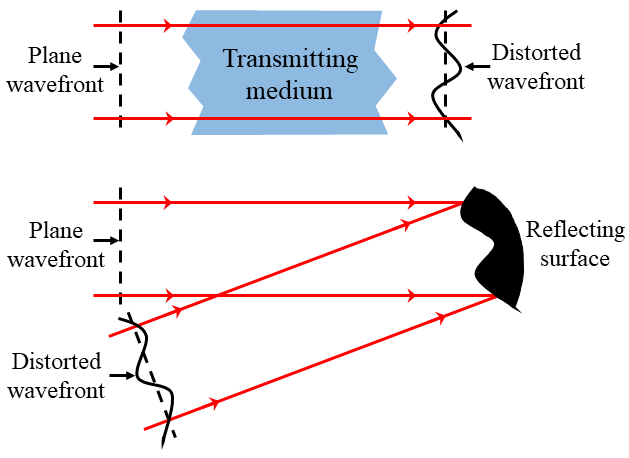|
Wavefront of a light beam can be defined as the surface formed by the loci of all the points that are in the same phase or are at an equal optical path length from the source.
If a coherent light beam having a plane wavefront passes through a certain medium or reflects from a certain surface, its wavefront gets modified according to the characteristic of the transmitting medium or the reflecting surface as shown in figure 1.
As a result, the shape of the plane wavefront gets distorted from that of the ideal shape. Such distortions in the shape of the wavefront from that of the ideal wavefront are termed as wavefront aberrations.
The wavefront aberrations are sometimes a nuisance leading to loss of information carried by the original wavefront whereas sometimes it may be helpful in studying the characteristic of the transmitting medium or the reflecting surface.
Thus, in both cases, it is important to measure the wavefront aberrations introduced by the transmitting medium or the reflecting surface. The device used to measure the wavefront aberrations is known as wavefront sensor.
Wavefront sensors are broadly classified as zonal wavefront sensors and modal wavefront sensors. The Shack-Hartmann wavefront sensor is a common example of zonal wavefront sensors whereas the bias beam based modal wavefront sensor is a common example of modal wavefront sensors.
|

Figure 1: Representation of wavefront aberration introduced by a transmitting medium and a reflecting surface.
|